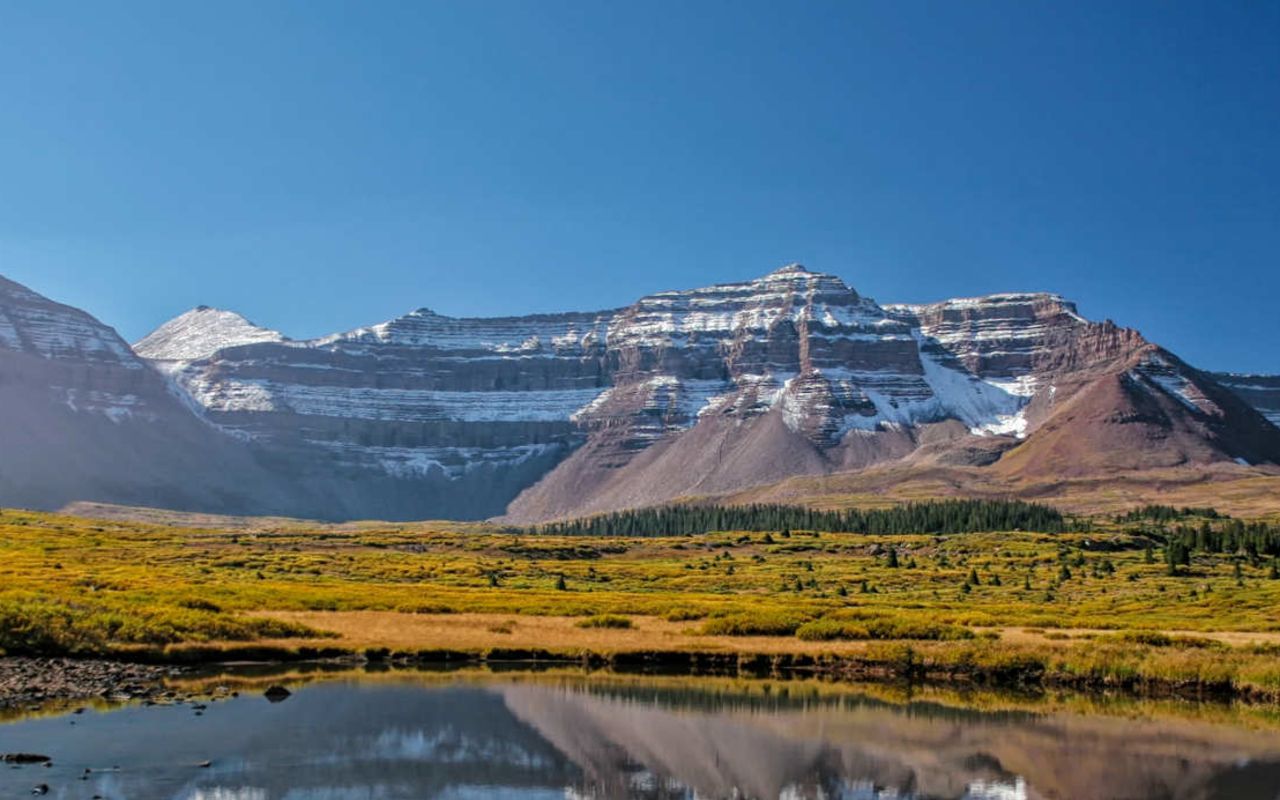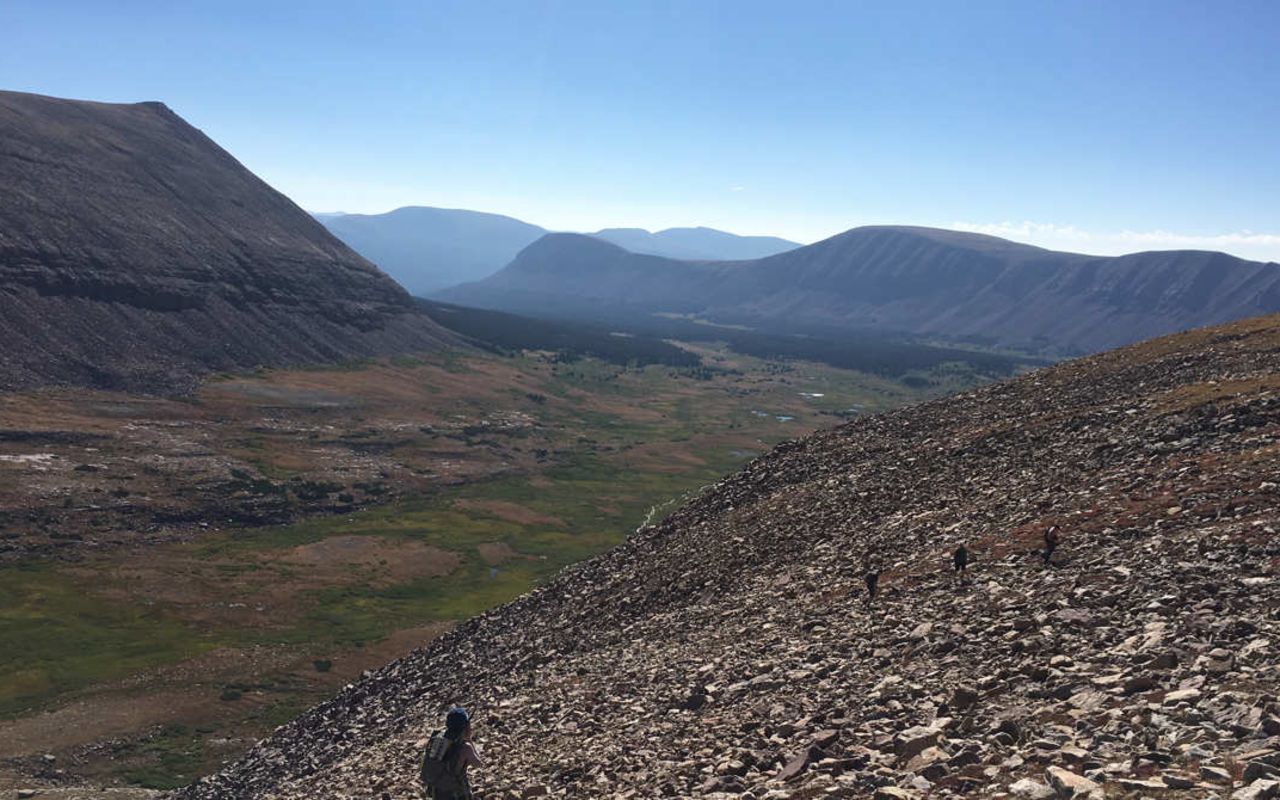Kings Peak
Utah’s tallest mountain is Kings Peak, standing at an impressive 13,528 feet above sea level. While it may not match the colossal summits of Denali, K2 or the Andes, it’s no less awe inspiring. As the crown of the Uinta Mountains, Kings Peak offers some extraordinary views to those willing to endure the looong and steep ascent.
Getting There
Where is Kings Peak, Utah? Located in the heart of Ashley National Forest, it sits amid the wall of peaks and passes that make up the Highline Trail. It’s a three-hour drive from Salt Lake City to Henrys Fork Trailhead, where you’ll start the hike. The fastest route is along I-80 into Wyoming. Turn south at Fort Bridger, Wyoming, onto County Road 219. When you reach Mountain View, head south along Wyoming Highway 410 back into Utah.
Hiking
How do you hike or climb Kings Peak, Utah? We recommend starting at the Henrys Fork Trailhead. The trail covers some 27 miles, starting with a fairly moderate climb for the first 10 or so, but then it turns rocky.
From the trailhead, the gain in elevation to Kings Peak, Utah, is just over 4,000 feet, and that lack of oxygen can mean slow going. Plan on 12 hours of actual hiking. Since you’ll want to stop to rest, eat and look around — and breathe — it could be closer to 16 hours from start to finish.
Camping
The hike itself can be completed in a day, if you really had to. But why rush? Most people prefer making it a two-day backpacking trip, if not three — or even four. There are several popular places to camp, namely Alligator Lake and Dollar Lake. Bring a water filter so you can take advantage of the many streams you’ll pass. And have less to carry. Yay!
This is a well-traveled area, which means it’s especially important to recreate responsibly.
- Camp in areas where others have been before, and avoid disturbing vegetation.
- Pick up all your trash (including fruit peelings)
- Bury (at least 6 inches deep) or pack out any solid human or dog waste
- Observe wildlife from a distance
If you’re planning an early start (which you should) or late return, stay at the Henrys Fork Campground near the trailhead. There’s fishing and kayaking there, too, so you can sit back and relax when you’re done.
When to Go
The trail is most popular from June to October. You’ll likely run into mud, ice and snow in the early summer and fall months, particularly in the rocks near the summit. And it can get pretty windy any time of year. Wear layers and keep slathering on the sunscreen. Remember to fuel up and hydrate regularly, because this is literally a marathon of a hike.
Mosquitoes love the hike, too — especially in July and August. Pack topical repellents and/or wear clothing with built-in protection. And make sure your tent screens are intact.
Nearby Attractions
After getting an aerial view, enjoy the scenery up close by taking the Flaming Gorge-Uintas National Scenic Byway. You’ll pass through Manila — the town closest to Kings Peak, Utah — and Flaming Gorge.
Not in a rush to get back to the city? Take the long way home, through Vernal. Stop for lunch and a peek into what Utah was like a long, long time ago at the Utah Field House of Natural History. There are 15 life-size replicas of prehistoric animals, including a Tyrannosaurus and Triceratops. And maybe a keychain or two.

